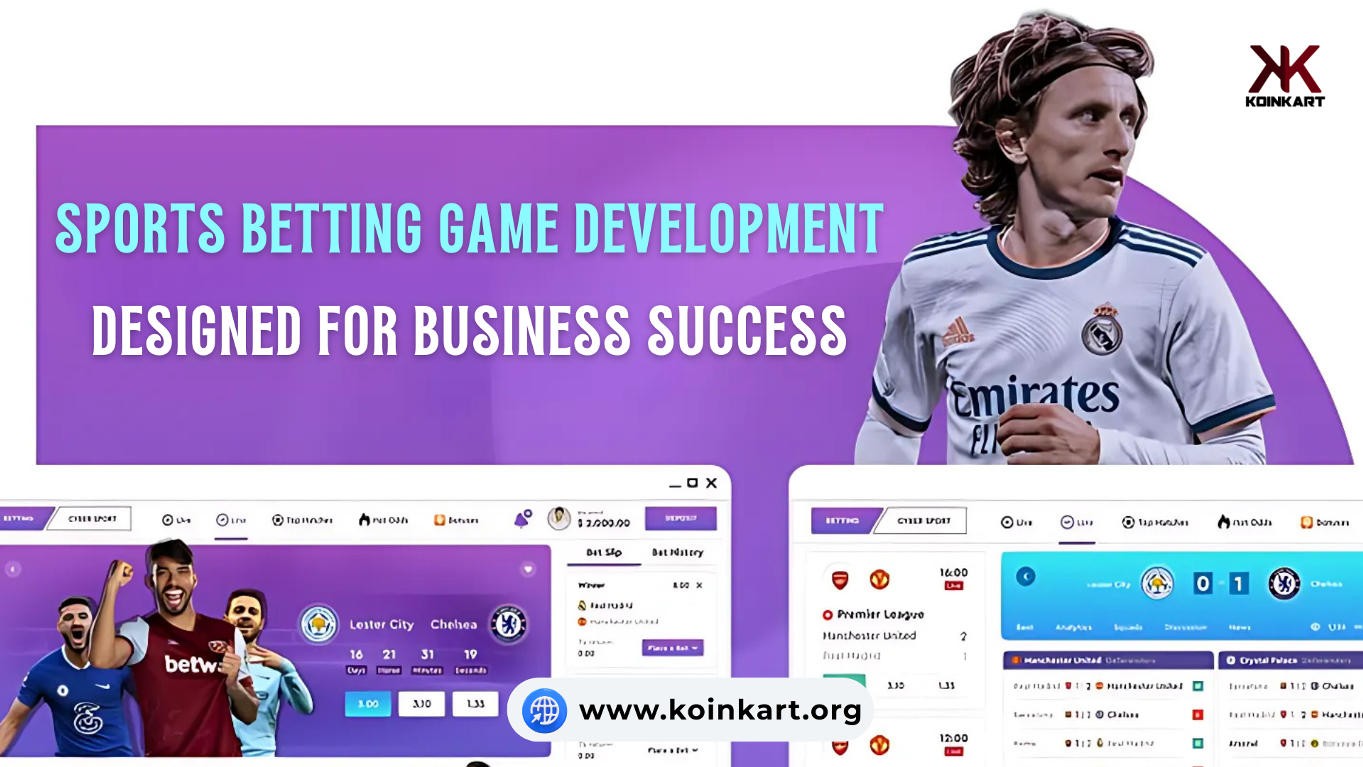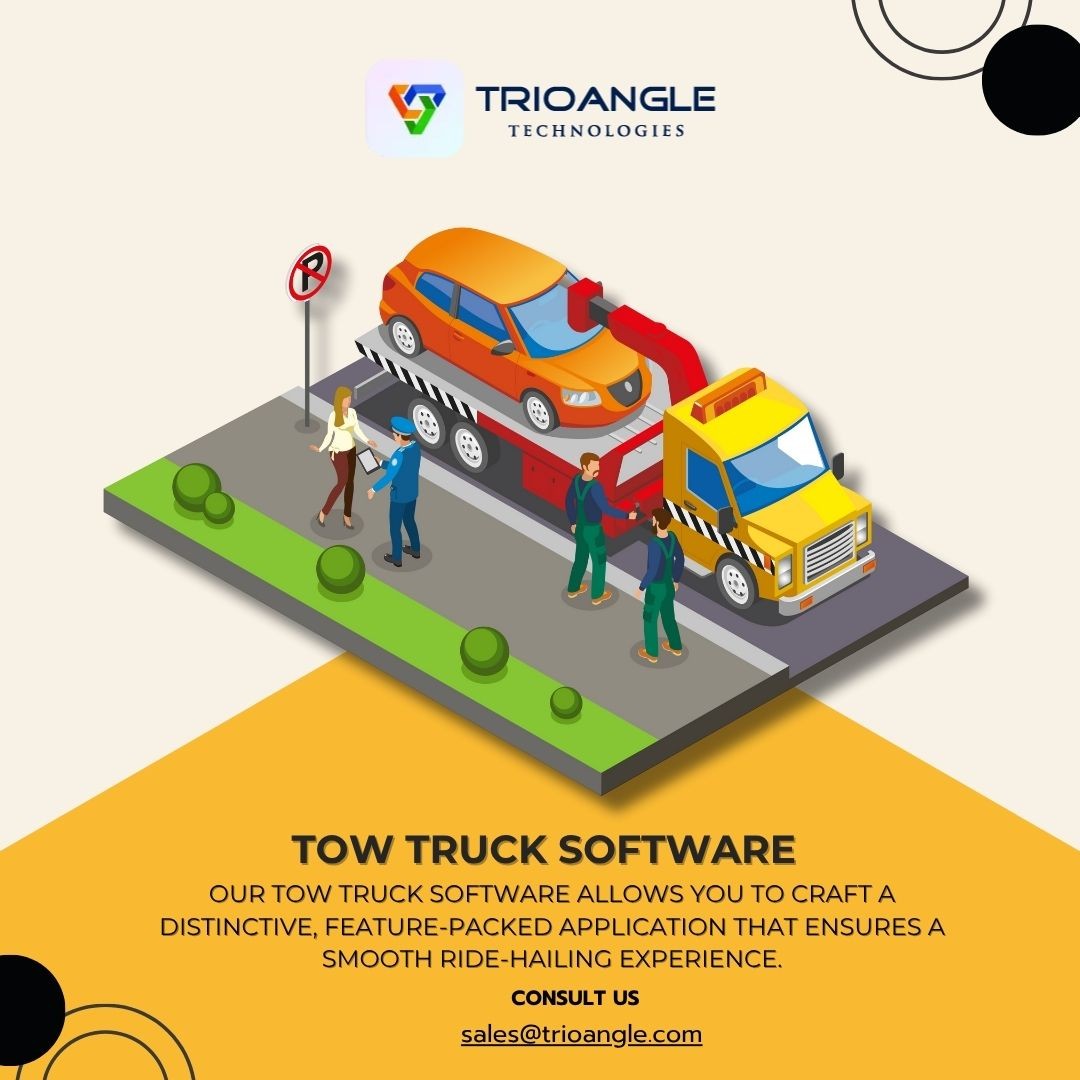Whether you’re a startup or an established brand, we deliver impactful digital strategies that boost your online presence and drive long-term growth. Choose Techfinad — your trusted digital growth partner in Noida.
Visit Us : https://techfinad.com/
https://www.esiteworld.com...
#grocerydelivery #jeebclone #groceryapp #DeliveryApp #startup #qatarbusiness #mobileapp
https://www.esiteworld.com...
#baqalaclone #grocerydelivery #groceryapp #DeliveryApp #startup #saudibusiness #mobileapp
Visit - https://www.spotnrides.com...
WhatsApp: https://wa.me/919600695595
#indriveclone #biddingconcept #RideSharingApp #uberclone #cabifyclone #taxibusiness2025 #lyftcloneapp #grabcloneapp #curbcloneapp #ehailingapp #gojekcloneapp #99taxicloneapp #cabifycloneapp #carreemcloneapp #cabrentalsoftware #ridehailingrentalapp #ztripclone #mytaxiclone #indriveclone #viaclone #easytaxiclone #uberclone

Unlock Best Taxi Venture Via Indrive Clone’s Bidding Concept
The inDrive clone app’s bidding concept is driving taxi firms towards success and SpotnRides is an add-on advantage to launch your app.
https://www.spotnrides.com/blog/explore-the-next-generation-of-taxi-business-with-bidding-concept-of-indrive-clone-script/Create your own scalable Upwork clone platform featuring gig posting, secure escrow payments, real-time chat, service bundles, skill-based filtering, ratings & reviews, and a powerful admin panel. Fully white-label and customizable with full source code access — ideal for startups, agencies, and niche freelance markets.
🔗 https://oyelabs.com/upwork...
#UpworkClone #FreelanceMarketplace #GigEconomyApp #ServicePlatform #oyelabs #WhiteLabelSolution #SecurePayments #CustomCloneScript

Upwork Clone - Launch Global Freelance Marketplace Platform
Launch your own customizable Upwork clone app with all the basic & advanced features. Build your freelance job marketplace platform now!
https://oyelabs.com/upwork-clone/Taxi apps have revolutionised the way people commute in today's fast-paced digital environment. Selecting the best taxi app development company is essential, whether you're an established company looking to increase your online presence or a startup hoping to start your own ride-hailing service.
Locating a development partner who is aware of your particular market needs, consumer behaviour, regulatory landscape, and competitors is crucial to the success of your taxi app.
The procedures and factors you need to take into account when looking for a taxi app development business that really fits your industry will be covered in this in-depth guide.
Summing Up!
Selecting the best taxi app development business necessitates more than just technical know-how; it also calls for a thorough comprehension of your target market, user trends, and regional transportation requirements.
Select a development team that shares your vision by making sure they provide scalable and customisable solutions, thoroughly describing your business objectives, investigating possible partners, and assessing their portfolios.
In addition to developing an app, the ideal partner assists you with developing a competitive, user-friendly, and long-lasting platform that is customised for your target market.
Take the time to choose wisely; it’s an investment in your success.
https://www.trioangle.com/...
#TaxiAppDevelopment #taxibookingapp #OnDemandTaxiApp #TaxiAppUSA #SmartTaxiSolutions #DigitalTaxiSolutions #TaxiStartup
Step into the short-video realm with Oyelabs’ powerful TikTok clone app. Packed with features like trending feed algorithms, video editing tools, duet/stitch modes, monetization options (ads, virtual gifts), and full source code ownership—this white-label solution lets startups and creators build custom video platforms fast and brand boldly.
https://oyelabs.com/tiktok...
#tiktokclone #ShortVideoApp #CreatorMonetization #VideoSocialPlatform #oyelabs #WhiteLabelApp #ViralVideoApp #CustomVideoScript

TikTok Clone - Launch Your Own TikTok Like App 2025
TikTok Clone is a 100% customizable, feature-rich solution to launch a video dubbing and video-sharing platform like TikTok, Dubsmash, Musical.ly in 7 days only.
https://oyelabs.com/tiktok-clone/Kickstart your global food delivery business with our ready-made DoorDash Clone App, built for startups & small businesses at a low cost.
🚀 Features include
✅ Real-Time Order Tracking
✅ Secure Local Payments
✅ Easy Admin Panel
✅ Multi-Service Ready.
🔥 Special Offer: Launch at 50% OFF + Free Demo! Don’t wait — start your food delivery app today.
🌐 Free Demo: https://www.trioangle.com/...
📲 WhatsApp: +91 6379630152 | 📩 salestrioangle.com
#fooddeliveryapp #doordashclone #DeliveryApp #RestaurantDeliveryApp #FastFoodDelivery #GroceryDeliveryApp #StartupApp #EntrepreneurApp #OnlineDeliveryApp #MultiServiceDelivery #DeliveryTrackingApp #LowCostApp #AffordableApp #Delivery Business #Delivery Startup
The eCommerce industry has witnessed immersive growth, fueled by new technology innovations and evolving user demands.
AliExpress Clone is one of the top on-demand platforms with a scalable architecture, unique layouts, and standard vendor management. It opens a new opportunity for startups to stand out in a competitive marketplace.
This blog provides a complete guide to building a multi-vendor app using an AliExpress clone script. We covered its essential features, development steps, and latest trends.
Dive in.
Aliexpress Clone: An Introduction
Don’t you know what an AliExpress clone is? Here’s a short overview of it. Let’s check in.
An AliExpress clone is a ready-made solution inspired by the original AliExpress business model, designed with its core functionalities intact. This connects every single user who wants to order products through an online medium. They can compare prices across multiple vendors and finally buy a product from a preferred store. It increases user convenience and satisfaction.
This eCommerce clone script streamlines the complete end-to-end purchasing process with advanced features, including user registration, multiple delivery addresses, shipment tracking, and secure payments.
Partner With Trioangle and Start Today!
Obviously, you are at the right place to start and implement your multi-vendor marketplace idea.
Trioangle's AliExpress Clone Script can help you turn your idea into a robust and revenue-generating eCommerce platform.
Connect with our experts to acknowledge business goals and craft solutions that meet your target audience's needs.
Subscribe now!
https://www.trioangle.com/...
#AliExpressClone #AliExpressCloneScript #AliExpressLikeApp #MultiVendorEcommerce #MarketplaceSoftware #EcommerceScript #ReadymadeEcommerce #B2BMarketplace #OnlineMarketplace
Greetings, taxi startups!
The taxi industry is gaining momentum with the emergence of on-demand transportation. But stepping into the market through taxi booking app development isn’t easy. That’s where taxi dispatch software comes in. It enables you to automate bookings, streamline operations, and manage the platform efficiently.
Here, we list the major challenges of taxi app startups and how a dispatch solution effectively addresses them.
Let’s find it clearly!
Slow Manual Dispatch
In the early stages, taxi startups can depend on phone calls or spreadsheets to assign taxis. It leads to delays, lost business trust, mismatched driver-passenger pairings, and frustrated customers. This challenge is addressed by,
Automated GPS-based trip assignment matches riders with the nearest available driver based on their pickup location.
Cab booking software with AI features simplifies the matching within seconds, far more efficient than map-based coordination.
This also predicts demand surges during local events or peak hours, helping manage driver allocation and increase earnings.
By utilizing these capabilities, you can reduce wait times, provide faster rides, and extend cab bookings without any bottlenecks.
Summing Up
Nowadays, standing out in a competitive taxi marketplace is critical. If you’re an entrepreneur ready to launch or already running a business, it’s important to take note of the challenges and solutions mentioned above.
Consider these points, and start choosing a taxi dispatch software with these functionalities to ensure instant success and growth.
Subscribe for more updates. Thank you for reading!
https://www.trioangle.com/...
#TaxiSoftwareUSA #USATaxiTech #DispatchSoftwareUK #UKTransportTech #TaxiAppCanada #RideshareAU #TaxiSoftwareGermany #FleetManagementSoftware #RideshareTechnology #taxidispatchsoftware
To More Information : https://www.addustechnolog...
#CryptoTrading #ArbitrageBot #CryptoProfits #BlockchainSolutions #TradingAutomation #CryptoInvestment #CryptoBusiness #FinTechSolutions #CryptoMarket
Koinkart is a reputed Sports Betting Game Development Company that offers full services for startups and businesses. We provide custom Sports Betting Software, Prediction Game Development, and solutions using blockchain & AI. Our expert team builds easy-to-use, secure, and scalable betting games to help your business succeed in the fast-growing sports betting market.
Whatsapp: +91 93842 63771
Website: https://www.koinkart.org/s...
Mail: businesskoinkart.org
Build a powerful Uber clone app that gives your business an edge in the ride-hailing market. With features like real-time GPS tracking, automated fare calculation, secure multi-payment gateways, driver and fleet management, and advanced scheduling, Oyelabs delivers a fully white-label and customizable solution to help you grow faster and smarter.
🔗 https://oyelabs.com/uber-c...
#uberclone #TaxiAppDevelopment #RideSharingApp #OnDemandTaxiApp #CabBookingPlatform #WhiteLabelTaxiApp #oyelabs #RideHailingSolution

Uber Clone App - Scalable White Label Taxi Solution
Uber Clone App gives your business a ready-to-launch taxi platform with real-time tracking, secure payments, in-app safety alerts, and a smooth booking experience.
https://oyelabs.com/uber-clone/Build a powerful Uber clone app that gives your business an edge in the ride-hailing market. With features like real-time GPS tracking, automated fare calculation, secure multi-payment gateways, driver and fleet management, and advanced scheduling, Oyelabs delivers a fully white-label and customizable solution to help you grow faster and smarter.
🔗 https://oyelabs.com/uber-c...
#uberclone #TaxiAppDevelopment #RideSharingApp #OnDemandTaxiApp #CabBookingPlatform #WhiteLabelTaxiApp #oyelabs #RideHailingSolution

Uber Clone App - Scalable White Label Taxi Solution
Uber Clone App gives your business a ready-to-launch taxi platform with real-time tracking, secure payments, in-app safety alerts, and a smooth booking experience.
https://oyelabs.com/uber-clone/Hello web development enthusiast,
The global e-commerce industry is growing steadily, expected to reach around $6 trillion by 2025. In particular, Amazon is a dominant platform in the marketplace, delivering a large products, excellent user interaction, and modern features that draw millions of buyers and sellers.
Jump in and learn how to properly design an Amazon clone website with a structured day-wise development plan.
Get started now.
What is the Best eCommerce Script?
An eCommerce script is a pre-built code program that allows businesses to swiftly develop and manage diverse stores. It offers basic functionality like as product listings, shopping carts, payment gateways, and order management, allowing merchants to sell products or services online more efficiently.
The key qualities that make it the best eCommerce script include customizability, mobile responsiveness, fast performance, multi-vendor support, reliable technical support, analytics, and reporting. It ensures a robust platform development experience and an engaging shopping journey.
Tying Up
Ultimately, we believe that this day-wise plan will help you successfully develop an Amazon clone website. With diverse solutions available, choose one of our best eCommerce script to build your powerful multi-vendor platform.
You're in the right place. Contact us today!
https://www.trioangle.com/...
#EcommercePlatform #TechForBusiness #AmazonCloneScript #USAeCommerce #EcommerceLondon #MiddleEastEcommerce #SAOnlineStore #OnlineMarketplace #MultiVendorMarketplace #DigitalRetailUSA #UAEStartupScene #MarketplaceTrends
Take your ride-hailing startup to the next level with a fully customizable Uber clone app by Oyelabs. Packed with features like live ride tracking, automated fare calculation, secure multi-payment options, driver management tools, and ride scheduling, this white-label solution empowers entrepreneurs to scale fast in the competitive taxi booking market.
🔗 https://oyelabs.com/uber-c...
#ubercloneapp #RideSharingBusiness #TaxiAppSolution #OnDemandTaxiApp #cabbookingsoftware #WhiteLabelTaxiClone #oyelabs #RideHailingPlatform

Uber Clone – White Label Taxi Booking Script
Launch your own taxi booking app with our Uber Clone Script. Fully customizable, feature rich, and 100% branded for your business.
https://oyelabs.com/uber-clone/Don't miss out—read more here: What Makes Monthly Subscription Services Attractive for Taxi Startups?
Mail ID:hellospotnrides.comSpotnRides
WhatsApp: https://wa.me/919600695595
#TaxiSolutions #AIAdvancements #SubscriptionModel #SpotnRides #SmartMobility #TechInnovation #StartupGrowth #DigitalTransformation #RideHailing #BusinessModel #Entrepreneurship #UrbanTransport #MobilityTech #FutureOfTransport #AIApplications #SustainableTransport #SmartCities #DataDrivenDecisions #uberclone #uberclonescript #aipoweredtaxiappsolution #aipowereduberclone
Find out the real cost to create an app like Uber for startups. Explore key features, development stages, and budget insights to build a successful ride-hailing app.
for more: https://duplextech.com/blo...
https://oyelabs.com/uber-c...
Launch a fully customizable Uber clone script that empowers your taxi startup with advanced features like scheduled ride booking, multi-payment integration, real-time driver tracking, and AI-powered dispatching. Designed to handle thousands of rides simultaneously, our Uber clone app ensures reliability, performance, and growth. With 100% white-label branding, you get complete control to scale across regions and dominate the on-demand taxi industry.
Explore here https://oyelabs.com/uber-c...
#uberclone #TaxiAppDevelopment #RideHailingApp #OnDemandTaxiSolution #UberLikeApp #oyelabs #RideSharingApp #WhiteLabelTaxiApp

Uber Clone App – White Label Taxi Booking Script
Uber Clone App is a ready to launch on demand taxi booking script integrated with the latest features to start your own online ride hailing business.
https://oyelabs.com/uber-clone/https://oyelabs.com/uber-c...
#taskrabbitclone #OnDemandApp #HandymanApp #AppDevelopment #gigmarketplace #startups #oyelabs
https://oyelabs.com/taskra...
#onlyfansclone #clone #AppDevelopment #app
https://oyelabs.com/onlyfa...
#taskrabbitclone #OnDemandApp #HandymanApp #AppDevelopment #gigmarketplace #startups
https://oyelabs.com/taskra...
#taskrabbitclone #OnDemandApp #HandymanApp #AppDevelopment #gigmarketplace #startups #oyelabs
https://oyelabs.com/taskra...
#taskrabbitclone #OnDemandApp #HandymanApp #AppDevelopment #gigmarketplace #startups #oyelabs
https://oyelabs.com/taskra...
#taskrabbitclone #OnDemandApp #HandymanApp #AppDevelopment #gigmarketplace #startups #oyelabs
https://oyelabs.com/taskra...
#onlyfansclone #clone #AppDevelopment #app #onlyfansclonescript #clonescript
https://oyelabs.com/onlyfa...

OnlyFans Clone | Launch Subscription-Based Content App in 7 Days
OnlyFans clone to launch your censor-free subscription-based creator community platform with our new age 100% customizable script loaded with latest features.
https://oyelabs.com/onlyfans-clone/Something funny happened as I was watching Google X's former chief business officer Mo Gawdat, on the Google-owned platform YouTube, outline his exact take on the AI dystopia he thinks is coming. The host began to ask Gawdat about the idea AI will create new jobs, then the video halted while Google ads served me a 15-second clip showing someone using Microsoft CoPilot to do their job.
When Gawdat returns, he begins his answer by talking about the idea of the West transitioning into service or knowledge economies: people, as he puts it, who "type on a keyboard and use a mouse." Oh dear. Gawdat's economics lesson concludes that "all we produce in the West is words [...] and designs. All of these things can be produced by AI."
One thing is impossible to deny: the business world is very interested in the idea of replacing humans with AI and, where it can be done, will not hesitate to do so. There's also the fact that every big tech company is pushing AI into their products and our lives.
The AI industry has something of a stock line about its technology replacing existing careers: AI will simultaneously create new jobs we can't even imagine, and people will start working in those fields. But Gawdat doesn't buy that line, and in straightforward language calls the whole idea "100% crap" (thanks, Windows Central).
Gawdat left Google to form an AI startup, Emma.love, and cites this company as an example of what he's talking about: the app was apparently built with only two other developers, a job that Gawdat reckons would have taken "over 350 developers" without AI assistance.
"Artificial general intelligence is going to be better than humans at everything, including being a CEO," says Gawdat, referring to the idea that the industry will eventually produce an AI model capable of reasoning and more intelligent than humans. "There will be a time where most incompetent CEOs will be replaced.”
https://youtu.be/S9a1nLw70...
Gawdat's spin on this, however, is that society has to undergo a paradigm shift in how we think about our lives: "We were never made to wake up every morning and just occupy 20 hours of our day with work. We’re not made for that. We defined our purpose as work. That’s a capitalist lie."
Tell me more, comrade! Gawdat generally seems to hold a rather low view of executives and their priorities, pointing out that the AI future is subject to human "hunger for power, greed, and ego” because the tools themselves will be controlled by "stupid leaders." I'm not sure I'd characterise Elon Musk as stupid, but I doubt I'm alone in thinking I'd rather not have him in charge of re-arranging society.
"There is no doubt that lots of jobs will be lost," says Gawdat. "Are we prepared to tell our governments, this is an ideological shift similar to socialism, similar to Communism, and are we ready from a budget point of view? Instead of spending a trillion dollars a year on arms and explosives and autonomous weapons to suppress people because we can't feed them."
Gawdat runs through some beermat maths, offering an estimate that $2.4-2.7 dollars is spent on military hardware every year, a fraction of which could solve a problem like world hunger, or lift the global population out of extreme poverty. Then we get into the truly starry-eyed stuff like universal healthcare worldwide and the end of war, with Gawdat saying for AI these things would be "simple decisions."
Hmm. I'll have some of what he's smoking.
Gawdat's take on AI starts out more persuasive than many others I've seen, but when it gets onto the more fantastical ramifications the caveat is simply enormous. If the singularity happens and AI just takes over running the planet then, sure, all bets are off: who knows whether we'll end up with dystopia or utopia. But that day may never come and, until then, there will still be human beings somewhere pulling all the levers. And as history shows, time and again, humans can be horrendous at making simple decisions: and that's rarely good for the rest of us.
You’ve probably noticed that industries like taxi services, e-commerce, delivery, and rentals are getting a lot of attention. But here’s something you might not have realized, towing businesses are also gaining serious traction.
The global towing software market is projected to reach $2.5 billion by 2033, growing at a CAGR of 9.1% from 2026. These projections indicate consistent growth in the years ahead.
As the on-demand roadside assistance service market continues to grow, now is the perfect time to launch your startup in this niche.
Ready to power your towing business? Connect with an experienced development team or explore more about how tow truck software can drive your success!
https://www.trioangle.com/...
#TowSoftware #TowSoftwareUSA #TowSoftwareUAE #FleetTechDubai #RoadsideAppUAE #TowingAppAmerica #TowSoftwareUK #RoadsideRecoveryUK #TowSoftwareSA











